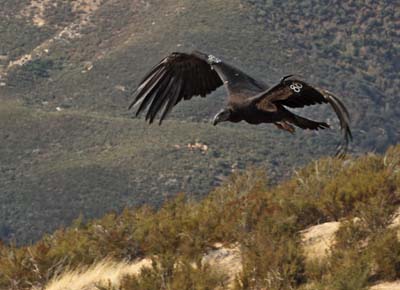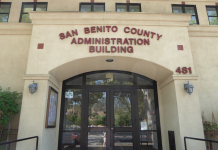San Benito County residents and others interested in Pinnacles National Monument’s future have less than a month to comment on a draft general management plan and environmental assessment. The public comment period will close on Jan. 11.
To comment, residents can fill out a form at parkplanning.nps.gov/pinn; email them to pi******@*ps.gov; or send them to the following address:
Karen Beppler-Dorn, superintendent
Pinnacles National Monument
Attn: General Management Plan Team
5000 Highway 146
Paicines, CA 95043
A summary of the draft general plan that will guide the vision of the park for the next 15 to 20 years along with the full draft is available online at http://www.nps.gov/pinn/parkmgmt/planning.htm. A copy is also available through the mail by request.
While the bill to make Pinnacles a national park was approved by the House of Representatives last summer, the Senate did not make a decision before the last session ended. But the general management plan will guide the future of the site whether it remains a national monument or is elevated to park status.
The draft general management plan includes four alternative approaches to the future of the park, which expanded under the last general plan to include more than 10,000 additional acres. In 2006, the monument acquired the 2,000 acre Pinnacles Ranch. It has also been largely involved in a condor recovery effort in recent years.
The summary letter of the draft acknowledges that the communities closest to the monument, including Hollister and Soledad have doubled in size, with a shift from an agricultural-based economy to “a more urban and technology-based economy.” The draft of the general management plan attempts to deal with contemporary issues and future issues, such as the need for parking for increased visitors.
Some of the issues identified include how to handle natural and cultural resources; wilderness preservation; climate change; maintenance of collections; visitor use and facilities; administrative and operational facilities; access and transportation; and land use and regional concerns.
In reviewing all of those items, four alternatives have been presented that would meet the changing needs to various degrees. Alternative A, the No Action Alternative, presents a continuation of current management direction. The action alternatives are Alternative B: Emphasize Backcountry Experience, Alternative C: Expand Visitor Experiences, and Alternative D: Link People and Resources.
The preferred option is Alternative D, which would aim to protect natural resources and the ecosystem, with a strong emphasis on educating visitors about the region and doing research. Cultural resources would also be enhanced “to protect and interpret their significance, connect those resources within their broader regional history, and to provide visitors with opportunities to experience and learn about the interrelationship between humans and the environment.”
For visitors, option D would provide additional recreation opportunities in the backcountry with new trails, but it would also focus on interpretation and education on the science and history of the region. It would also emphasize Pinnacles National Monument in its broader context of the Gabilan Mountains ecosystem.
Any facilities updates would be used to support increased visitor understanding of natural and cultural resources. A new visitors’ center could be build near the campground store when the current structure needs to be replaced.
The first alternative is to continue with the current management plan that has been in place since 1976. It would maintain the raptor monitoring program, but would lack a cultural resource expert at the park meaning the park would continue to rely on regional staff to assist to “maintain a minimum level of cultural resource management and compliance.” Visitors would continue to have recreational opportunities such as hiking, camping, picnicking, rock climbing and viewing scenery. Interpretive services would continue and there would be limited education programs as funding allows. Existing facilities and trails would be maintained.
In Alternative B, the park staff would emphasize conserving and restoring natural functions, protecting watershed values and protecting sensitive wildlife areas. Cultural resources would be protected, but structures without historical significance that are not used for the monument operations could be removed. This option emphasizes solitude for visitors in a natural setting. Traditional recreational uses would continue, with some new trails built to provide access to new areas within the monument. Facilities would be minimized and located in existing developed areas.
In Alternative C, the focus would be on enhancing the visitor experience. While natural resources will continue to be protected, cultural resources would also be more emphasized to provide visitors with opportunities to experience the history of the region. Visitor uses would be expanded to include equestrian trails and backcountry camping. Additional interpretive and educational facilities, as well as guided programs would be added. A focus would be placed on increasing partnership efforts and outreach programs focused on visitor use and stewardship opportunities.
The facilities would focus on supporting visitor use, such as construction of a larger visitor center between the campground and Highway 25 entrance to replace the current visitor center and campground store.










